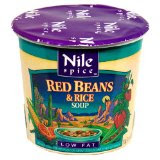 One of the items that comes up on most through hiker gear lists are backpack covers. As most of our backpacking trips have been under fair skies with only a handful of thunderstorms, we have largely backpacked sans cover for several decades. We have never needed a cover as we have been diligent regarding encasing everything dry in heavy duty trash bags sealed with doubled goose necks. Those few time that rain was heaped upon us, we simply pulled out an extra plastic bag and pulled it over the pack. Often, we have been the only person in a large group with a dry sleeping bag and clothes in the morning.
One of the items that comes up on most through hiker gear lists are backpack covers. As most of our backpacking trips have been under fair skies with only a handful of thunderstorms, we have largely backpacked sans cover for several decades. We have never needed a cover as we have been diligent regarding encasing everything dry in heavy duty trash bags sealed with doubled goose necks. Those few time that rain was heaped upon us, we simply pulled out an extra plastic bag and pulled it over the pack. Often, we have been the only person in a large group with a dry sleeping bag and clothes in the morning.As we have never hiked in pouring rain and due to the abnormally cool wet weather this spring, there is a good possibility of our needing a backpack cover. Looking through the catalogs, there is no shortage of backpack covers. Prices usually ranged from twelve to twenty-five dollars depending on material and brand. Most are black or green. A few are bright blue. Only one backpack cover stood alone in blaze orange - Cabela's Blaze Orange Pack Rain Cover.
As we have long performed search and rescue on the ground and in the air, we are big believers in "see and be seen" in emergencies and to prevent emergencies. So, it was with some concern that we discovered that this year's section hike would take us through Pennsylvania state game lands during turkey hunting season. We have a lightweight mesh blaze orange vest that we wear on ground teams, but with a backpack covering much of our reverse, a blaze orange backpack cover seemed just the thing.
Our online order from Cabelas was swiftly delivered well before the estimated delivery date. The cover is well made from one large piece of blaze orange nylon. A cord with lock runs around the perimeter of the cover. The online reviews said this cover was large and large is an understatement. Its huge! While its an easy match for our large Camp Trails 5,000 inch pack, we were able to cinch it down to fit our smaller 3,100 inch Outdoor Products Arrowhead backpack. We were able to fold the cover into fourths and roll the cover into a small roll that easily fit into the undersized top pocket of our Arrowhead backpack.
We did note that when we put the cover over our backpack straps and waist belt ("the "wrong way") that we were able to cinch the cover down small enough that only the handle on our backpack was protruding. This should help protect our backpack straps while our backpack rides below on the Greyhound bus. The nylon seems too light for our pair of protruding poles, so we plan to hand carry our trekking poles onto the bus and store above or below our seat.
The Cabelas Blaze Orange backpack cover isn't for everyone, but if you want a large cover or a very visible cover, then this may be the backpack cover for you. For $15 plus another five for shipping, we consider a blaze orange backpack cover cheap insurance against not only rain, but flying wads of lead.





















